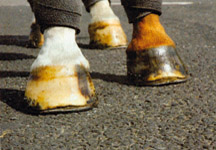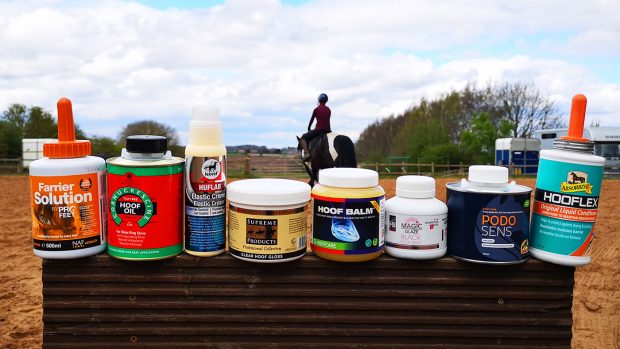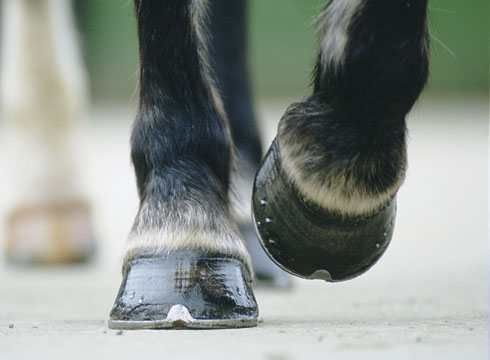There is a common belief that a laminitic foot – or a hoof with an abscess brewing within it – may be hot. This is usually detected by feeling one foot and comparing it with the other.
But just how accurate is this as a diagnostic tool?
Vets in Denmark decided to record the temperature of the coronary bands of horses over a four-day period, taking measurements of all four feet every hour between 8am and 10pm.
To make things interesting, they repeated the experiment three times using the same horses on three different diets, including a high-fructan diet that risked causing laminitis.
The experiments were conducted during the spring in Denmark, when there can be wide variations in ambient temperatures between day and night.
The results showed no association at all with diet, even on the laminitis-inducing feed, so they ruled out foot temperature as an indicator of an impending laminitic attack.
They also showed that the temperature varied by as much as 17 °C between two feet belonging to the same healthy horse at the same time.
There was a regular daily rhythm in coronary band temperature, which was linked closely to the ambient temperature of the stable – rising during the day and falling again in the evening.
Interestingly, these changes could be dramatic and were not always gradual.
Even though the temperature of the surroundings increased and decreased smoothly throughout the day, the temperatures of the coronary bands could jump in big steps.
The conclusion? Do not read too much into the temperature of the coronary bands – even in healthy horses there can be wide variations.




